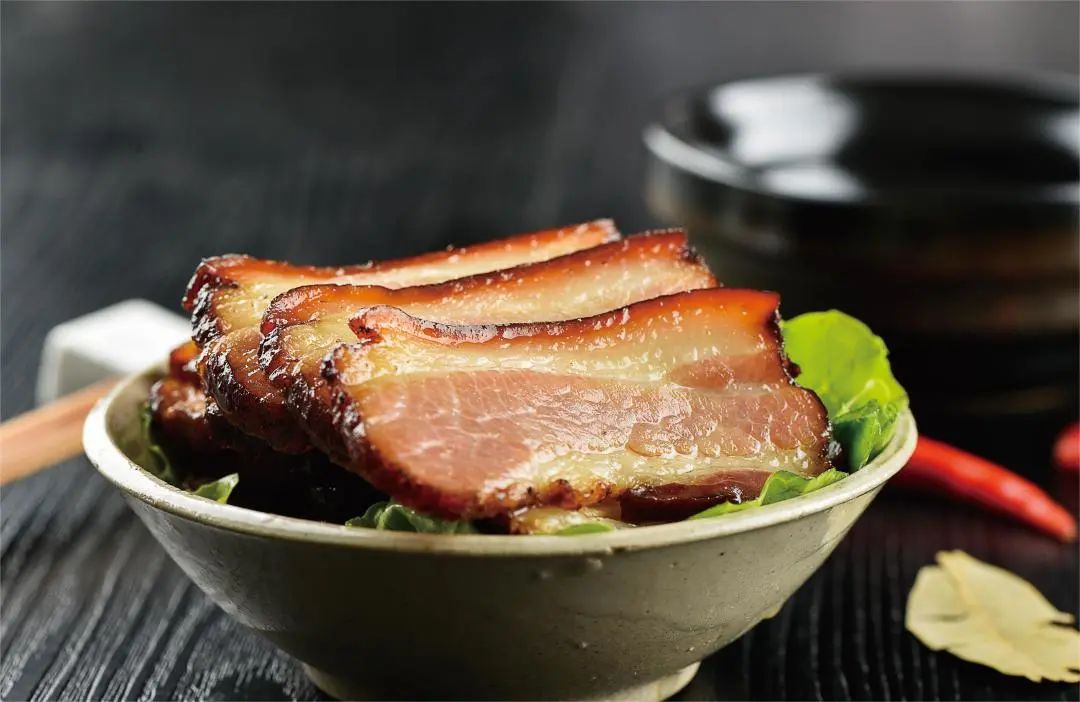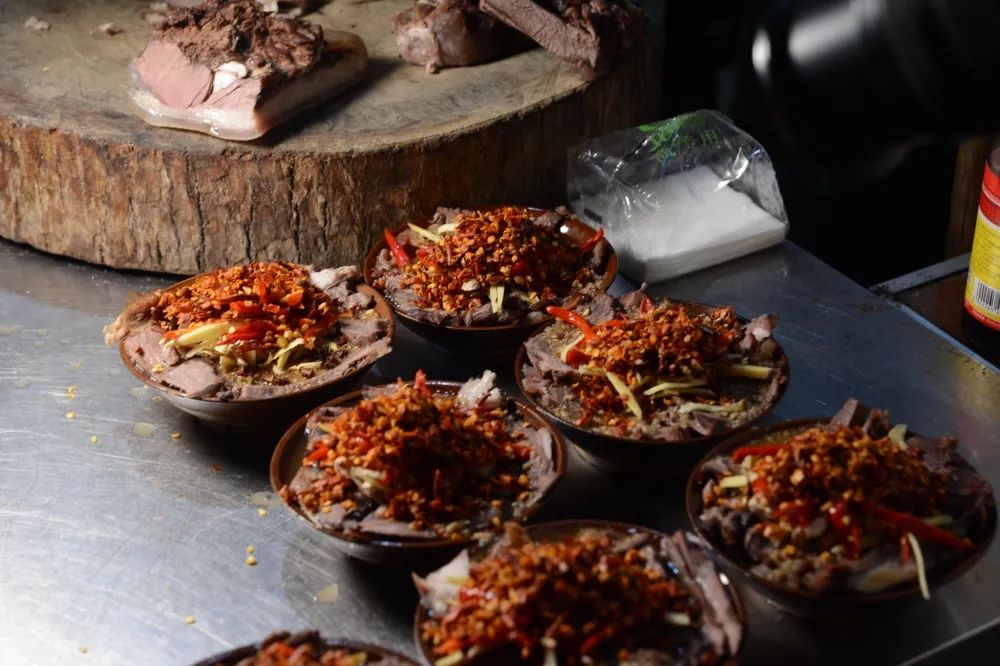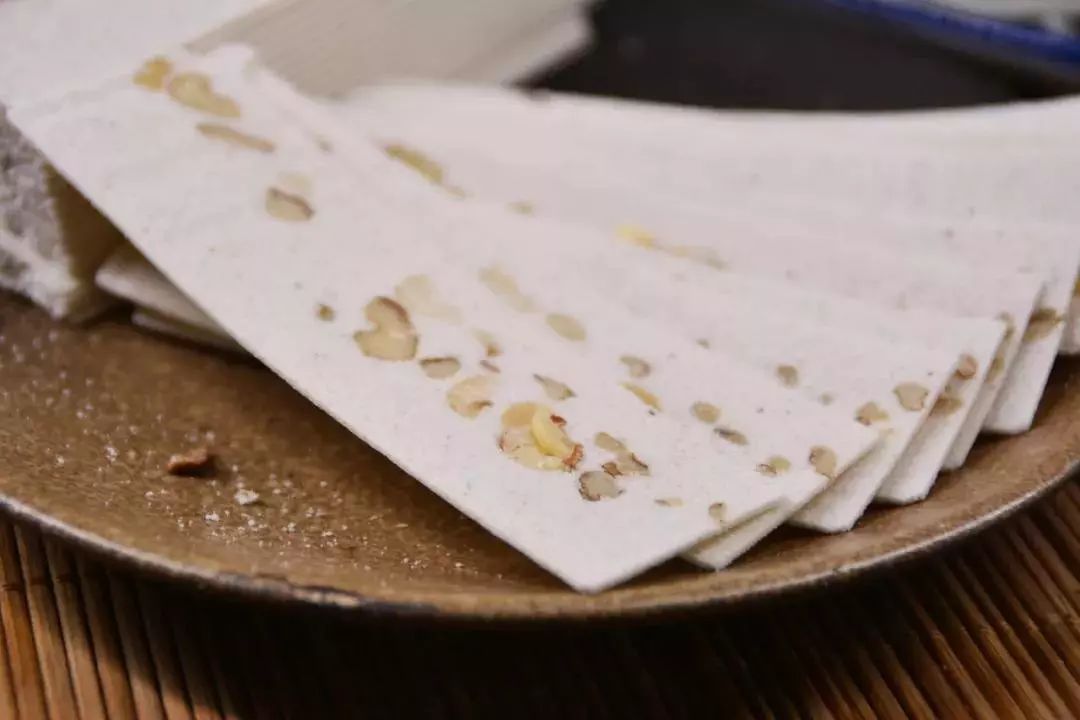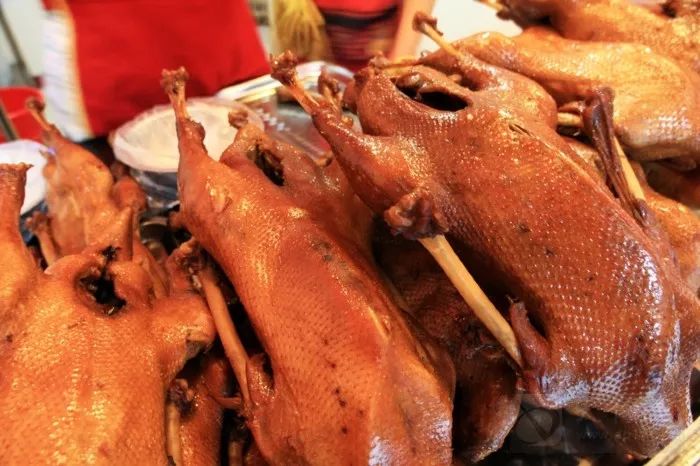 Bridging News
Bridging News
Special Delicacies Make Chongqing's Winter Merrier
With the tourism sector in Chongqing recovering and the Chinese lunar new year fast approaching, people in the counties and districts of Chongqing prepare various special delicacies to entertain visitors and delight their taste buds.
Pork Feast
The Pork Feast is featured as a tourist attraction in Chongqing. Some farmhouses and hotels offer tourists authentic pork feast experiences with booking services.
"Eight Bowls" are the most common main dishes at pork feasts. Each village and town has its portfolio of dishes and cooking methods. But they all use lean meat, large intestines, ribs, leg bones, pig blood, pig livers, and pig kidneys to make Fried Pork Slices with Green Pepper, Braised Large Intestines with Potatoes, Stewed Ribs with Rice Noodles, Pig Livers with Pickled Pepper and other dishes.

Pork Feast has become a featured product to attract tourists to Chongqing. (Photo/Fairy Mountain Scenic Area)
Households may also serve chicken, duck, fish, shrimp, or other dishes as a gesture of extraordinary hospitality. Neighbors and tourists become one harmonious whole after the feast begins. While eating, they chat warmly, wishing each other good luck, prosperity, and health for the new year.
Matang Syrup and Mabing Cake
Stewing Matang Syrup and making Mabing Cake is a long-standing tradition of the Gelao ethnic group. According to legend, once upon a time, a Gelao woman made a sweet syrup by stewing corn. She mixed it with stir-fried corn grains to prepare "Mabing Cake." She offered the cakes to the gods and her ancestors. That night, the gods appeared in the villagers' dreams and told them how tasty the food was. Thus, the custom has been passed down among the Gelao people.
The key to stewing Matang Syrup is stewing. Most Gelao families simmer syrup on a firewood stove because it is easier to stir in a big iron pot.
The syrup can be directly eaten as sugar after it is cooled and hardened. It can also be mixed with other ingredients to make Mabing cakes while it is hot. Mabing cakes are changeable. By adding different ingredients to the syrup, we can get cakes of different flavors.

Mabing Cake is a long-standing traditional food in Gelao ethnic group. (Photo/ Pengshui Convergence Media Center)
Matang Syrup and Mabing Cake in the twelfth lunar month are delicious dishes for the Gelao people to worship gods during the Spring Festival and treat guests at banquets. They are also gifts that residents and tourists in the resort will buy during the Spring Festival. Such slowly stewed, purely handmade delicacies reflect plain, hard-working people's serious attitude toward life.
Mutton Feast
The habit of eating mutton in winter is not unique to one region. During the winter, mutton is a universal tonic due to its warming properties. The streets of Fairy Mountain Tourist Resort are lined with mutton restaurants.

Mutton Soup is a universal tonic choice in winter. (Photo/ Fairy Mountain Tourist Resort)
In Mutton Feast, white milky bone soup is the star. Side dishes like potato chips, radish, crown daisy chrysanthemum, and winter bamboo shoots are served together in the soup pot. The milky white soup in the pot is steaming. The pink mutton slices become slightly reeled after they are boiled. You dip one slice into the spices. It tastes tender and juicy, with a lingering aftertaste.
Heixi Braised Mutton with Preserved Greens
One of Qianjiang's intangible cultural heritage foods is Heixi Braised Mutton with Preserved Greens. Aside from tasting delicious, the dish keeps people warm in the cold winter. It is an indispensable delicacy on the table in winter.

Heixi Braised Mutton with Preserved Greens. (Photo/ Qianjiang Cultural Tourism Development Commission)
Traditionally, Chinese people make Braised Pork with Preserved Greens with pork. Heixi people thought that by making raw mutton smell like braised mutton, the original odor could be removed, and the mutton would last longer. Additionally, more mutton would be consumed at weddings and funerals. This is how Heixi Braised Mutton with Preserved Greens emerged.
Peach Slices of Hechuan District
Hechuan Walnut Slice is made from first-class glutinous rice, walnuts, Sichuan sugar, honey roses, and other materials. It features fine powder, soft texture, thin slices, white color, sweet taste, rich walnut kernel flavor, and rose fragrance. It is a specialty of Hechuan and a necessary gift for Chongqing people to visit relatives and friends during festivals.

Peach Slices of Hechuan District. (Photo/ Hechuan District)
Brine Goose of Rongchang District
Brine Goose was originally a Chaoshan dish. The Hakka people of Rongchang continuously improved Brine Goose over a period of three hundred years, so it became a typical food brand in Rongchang District. Today, it is popular with the people of Chongqing and even the whole country.

Brine Goose of Rongchang District. (Photo/ Rongchang District)
 Related Stories
Related Stories